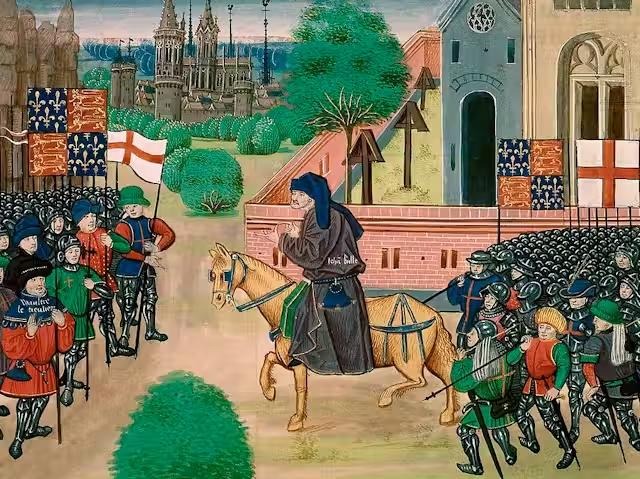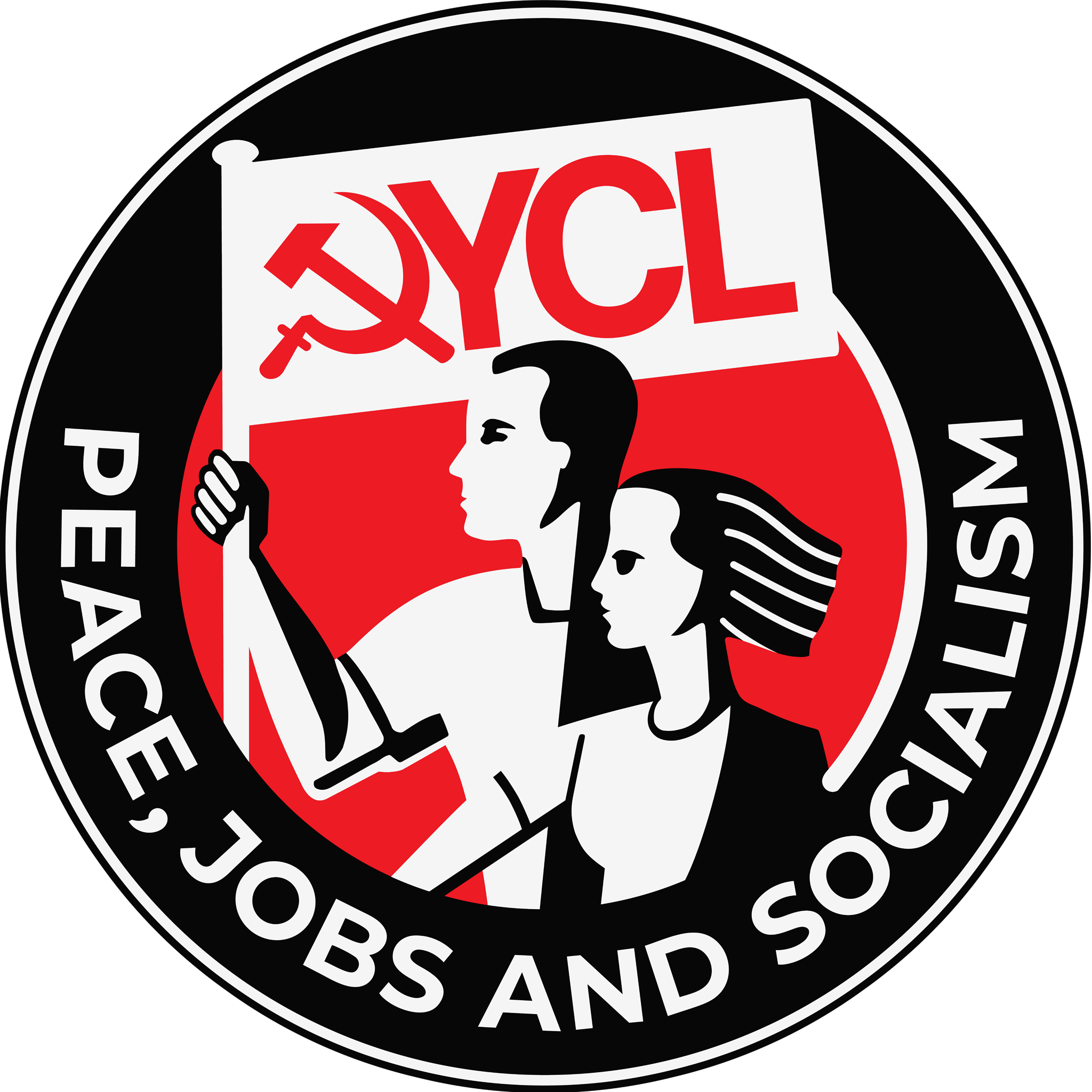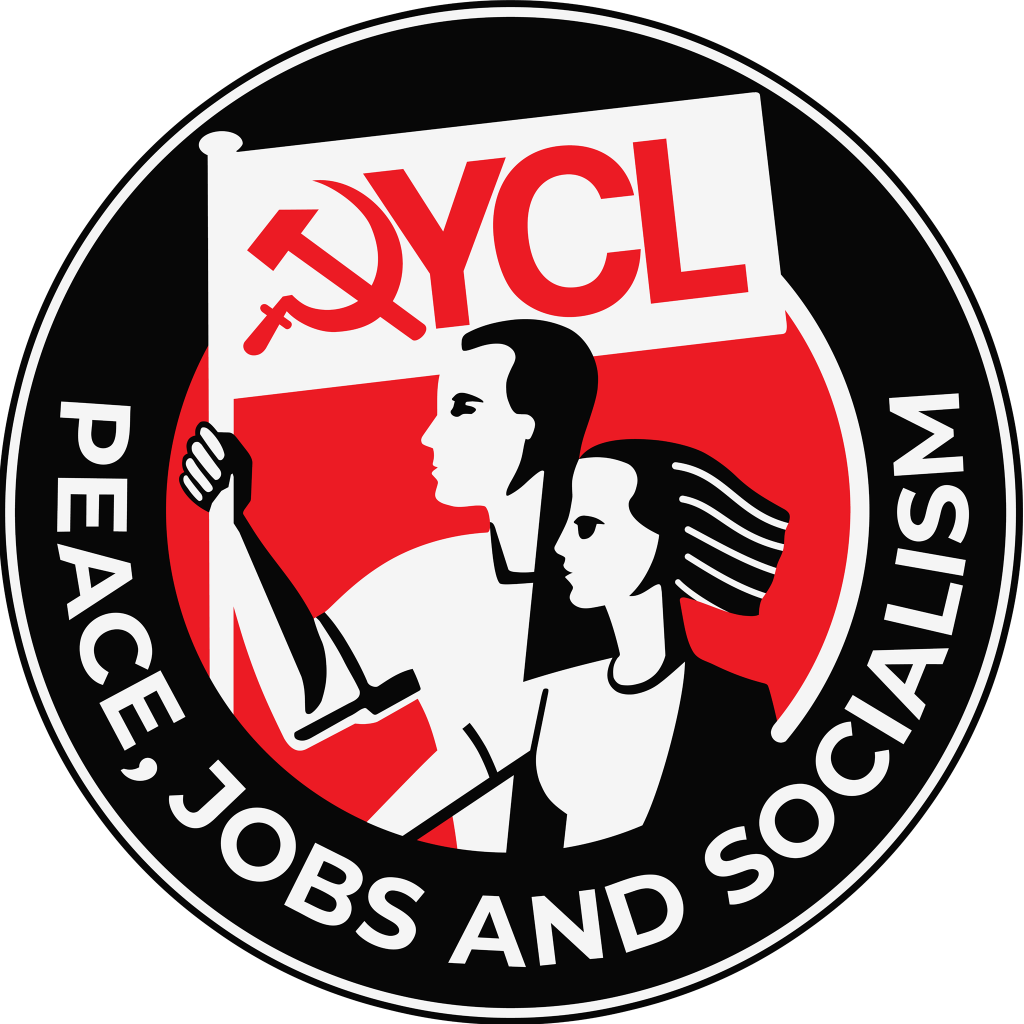Understanding history correctly is crucial in order to chart a path forwards. Unlike bourgeois historians who often see history idealistically as driven by the ideas and actions of “great men”, or consider capitalism to be the “end of history” with no potentials for further advance, Marxist-Leninists apply dialectical materialist thinking to understand that history proceeds according to underlying patterns and laws, with the continuous resolution of contradictions and the emergence of new ones in their place. Dialectical materialism when applied to the study of the development of society is known as historical materialism, and within this framework, capitalism is just one phase in the development of human society, and one which is soon nearing its end.
In the Communist Manifesto, Marx and Engels write that “the history of all hitherto existing societies is the history of class struggle.” What they mean by this is that since the emergence of competing classes (which have not always existed), each specific era of humanity can be defined by the struggle between those different classes, and that it is this struggle which drives society forwards, leading to revolutions and new modes of production. Studying the history of class and the class struggle is therefore at the heart of our efforts to understand and enact social change. Marx and Engels refined and improved the ideas of Adam Smith to express the history of class society in several stages, and Marxist-Leninists still have a broad understanding of history that follows these basic stages.
Primitive Communism
Starting about 2.5 million years ago, early human societies survived largely through hunting animals. Meat provides fewer calories than plants, meaning that our population size was relatively small and nomadic, moving around to track game. Class relies on the production of a surplus which is claimed by one class at the expense of another, but in early hunter-gatherer societies, people consumed everything that was produced and did not have the technology to support a class that lived off the labour of another. This meant that people in early hunter-gatherer societies were often very equal, as evidenced by, for example, communal housing and mass burial sites.
In these early societies, there were no extra resources to fight over, so conflict and war were rare, and the means of production (the tools needed to produce what was needed for survival) were owned collectively. With no private property, men could not dominate women and upper classes could not dominate lower classes, meaning that everybody shared collective responsibility for each other and for the wellbeing of the tribe.
Around 8,000 BC, following the development of new tools and technologies and possibly as a result of overhunting, humans moved from nomadic hunting to settled farming. This created a surplus of food for the first time and led to rapid population growth, as well as the beginnings of markets, money, class society, patriarchy, and war.
War was not simply a result of the new surplus of cattle and crops that could now be stolen by other tribes. Farming settlements also needed enough women to maintain a stable population, meaning that some small settlements may have resorted to stealing women as well. Warriors from these societies who engaged in both stealing and defending women were usually men, since these were usually the tribe’s hunters and had access to the weaponry. This is one example of how patriarchal societies, marriage rites, family structures, and religions developed to legitimise the exchange of women and later, with the emergence of private property, the inheritance of this property down the male line.
Slave Society
With the development of surplus food and war, tribes that would not have otherwise been able to live off the labour of others were incentivised to keep slave populations for the first time. Eventually, these slaves were traded as commodities on the market and made to work the land on agricultural estates, or to create consumer and luxury goods. Alongside the trade of human beings for labour emerged the trade of women for sex, and prostitution emerged at the same time as slavery. Other classes included the “free” peasants and wage labourers, small business owners and traders, as well as the aristocracy, who did no work at all.
At the centre of this mode of production was the class struggle between slave and slave owner, but, if left alone, a society with a large number of slaves would have been completely unstable. Without violence, slaves would have simply not accepted the conditions they were exposed to or done the labour demanded of them. The first states therefore developed as a tool of the ruling class to violently enforce the new class hierarchy. This not only included direct violence from soldiers and armies, but also the legitimation of violence through state laws and religions. While the state pretends to be a neutral force that stands above classes and fairly mediates conflicts between them, Marxist-Leninists understand that the state and whatever constitutional form it takes is actually created by the ruling class and serves as a dictatorship of that class over others, including today.
Feudalism
Since slaves were usually kept segregated by sex and not allowed to have families, the constant need to replace the ones that died or were killed led to military conquests all over the world. But this could not last forever, and as in the Roman Empire in around 200 AD, a shortage of slaves meant that tenant farming became a more sustainable and dominant form of exploitation, with a single peasant family reproducing itself and working a plot of land for generations. The basic class struggle under feudal and peasant economies was therefore the struggle between peasant and landlord.
To prevent peasants from simply escaping exploitation by moving to unoccupied land, the land was divided up between different aristocratic families, usually overseen by a king, tsar, emperor, or some other monarch. States were typically religious, with the monarch’s reign legitimised by “divine right” or the belief that he was placed there by a divine being, or was even the descendent of one himself. The peasantry worked the land and produced what it needed for its own survival, but the land itself was owned by the aristocracy who seized any surplus, either as food or rent.
Capitalism
The development of new technologies in the form of large, expensive machinery, as well as the growth of towns and cities led to the strengthening of a new exploiter class, known as the capitalists, as well as a new exploited class, known as the proletariat. The capitalist class or bourgeoisie owned the means of production in the towns and cities, including the factories and machinery, which were priced out of worker control. The proletariat or working class was therefore forced to rely on the capitalists for survival, producing commodities through their labour in exchange for a wage, while profits from selling the commodities, the workers’ surplus value, was carefully and legally appropriated by the capitalists according to the law of equal exchange. In Britain, the ranks of the proletariat were also swelled through a series of land enclosures to deprive the peasantry of its means of survival and force them into wage labour in the cities, leading to the eventual disappearance of peasants as a class.
As this progressed, the capitalist class became so powerful that it challenged the old ruling class, the feudal aristocracies for power, leading bourgeois revolutions across Europe and throughout the world. In France, the French Revolution of 1792 overthrew the monarchy and established a bourgeois republic. In Britain, the English Revolution and the so-called Glorious Revolution ended with the deposition of James II in 1688, although the royal family continued in a subordinate position to the capitalist class under a system known as a constitutional monarchy.
Today, the ruling classes include the many different types of capitalist, including industrial, finance, and merchant capitalists, as well as remnants of the old feudal system: old, aristocratic families who still own vast stretches of land, as in Scotland; and, of course, the monarchy. But all of these different ruling class elements hold one thing in common: they live parasitically off the wealth of the workers without producing anything of value themselves and therefore stand as obstacles to human development.
Under capitalism, liberal democracies replaced the rule of kings by the rule of political parties. This is a more stable form of dictatorship, creating an illusion of consent and choice to prevent working-class revolutions against clear exploitation, despite the fact that most political parties simply represent different factions of the bourgeoisie or, at best, the higher strata of the workers acting against the interests of the working class as a whole, while manual workers are almost completely excluded. Universal suffrage is therefore an illusion of choice in which we are merely permitted to choose which member of the ruling class oppresses us once every four or five years.
Parliamentary elections are also rigged in favour of the capitalist class which has a monopoly over wealth and the media. This can be used either to win elections directly or to lobby and threaten parties until they adopt capitalist-friendly policies. As a last resort, the ruling class also has a monopoly over legal violence (the police and military), so can abandon any pretence at democracy and use force to maintain its rule. As Lenin said, “Freedom in capitalist society always remains about the same as it was in ancient Greek republics: Freedom for slave owners.”
But capitalism also creates the tools of its own destruction, concentrating workers in large numbers and giving them access to the levers of power. Organised workers with the class consciousness to do so can wield the two advantages that they have over the capitalist class: control over the means of production and sheer strength of numbers. Strikes, direct action, working-class democratic bodies (workers’ councils/soviets), and a situation of dual power can therefore develop under the leadership of a Communist Party guided by Marxism-Leninism to eventually overthrow the dictatorship of the bourgeoisie via a socialist revolution, smashing, rather than seizing the bourgeois state and replacing it with working-class rule, known as the dictatorship of the proletariat.
Socialism
As Marx and Engels wrote, after the establishment of a dictatorship of the proletariat, the working class will “use its political supremacy to wrest, by degrees, all capital from the bourgeoisie, to centralise all instruments of production in the hands of the State, i.e., of the proletariat organised as the ruling class; and to develop the productive forces as rapidly as possible.” Therefore, the establishment of a dictatorship of the proletariat initiates the transition period from a capitalist to a socialist economy, at which point the means of production become fully socialised through various forms of socialist economy, including socialist state ownership, co-operatives, and collective farming—an economy based on cooperation, not competition, where the periodic crises of capitalism no longer occur.
The transition period has occurred and is occurring differently in different places, but has generally started with the appropriation of the private property of the largest capitalists through socialist nationalisation and the confiscation of the large estates of the landlords either with or without compensation, while smaller capitalist enterprises are allowed to persist for a while under state capitalist regulation. The wealth accumulated so far then begins to be shared among the working class for the first time, and in the case of the underdeveloped economies which may not have gone through an extensive capitalist phase, there is a concentrated effort to develop the productive forces as quickly and efficiently as possible, as well as eliminate the differences in development between town and countryside.
Marxists have sometimes disagreed over where to draw the line between the transition period out of capitalism and socialism itself. For example, Lenin never considered the Soviet Union to have achieved socialism, with Stalin only declaring socialism to have been established in 1936, but whatever label we apply to it, the Soviet Union was the first lasting socialist experiment in history, formed in the wake of the Russian Revolution led by Vladimir Lenin in 1917 which was followed by other revolutions from the 1940s. The 20th century socialist societies had many features in common, including universal employment, housing, healthcare, and education, much more democratic forms of government, and large, worker-owned and planned economies directed towards the production of use values, rather than exchange values, and whose profits were therefore directed towards the interests of the people, rather than the enrichment of the capitalists.
These benefits were freely given not just as a moral kindness, but as the logical outcome of the new relations of production under socialism. The capitalist class profits from reducing the living conditions of the workers to the minimum needed to reproduce the workforce, and high unemployment serves the capitalist class by driving down wages. On the other hand, the proletariat as ruling class benefits from the greatest possible development of the productive forces, which necessitates a strong, healthy, intelligent labour force, where everyone who is able to work is provided with a job as a means of contributing to the improvement of society around them.
This also means a fundamental transformation in the division of labour. In a society which benefits from a well-rounded labour force, workers not only receive a full education, but the intelligentsia receives training in productive labour. For example, in the Soviet Union, productive labour was a core part of the compulsory curriculum, including labour in factories, workshops, and farms; and during the Cultural Revolution in China, 20 million young people and students travelled down to the countryside to work alongside the peasantry. The class differences which still remain under socialism are therefore far less rigid, in the process of disappearing entirely. Workers are more freely able to change employment based on their interests, and class background does not dictate future employment. For example, the first man in outer space, Yuri Gagarin, was originally a factory worker in rural Russia. And long before he became one of the most powerful leaders of the 20th Century, Josef Stalin came from a peasant family as the son of a Georgian cobbler. Compare this to Britain, where more than 80% of our Prime Ministers went to Oxford or Cambridge, and nearly half came out of just one elite institution: Eton College.
Since the overthrow of the Soviet Union and most of the socialist bloc in the early ‘90s, Marxist-Leninists recognise the existence of several actually existing socialist states which have persisted, including China, Cuba, Laos, Vietnam, and the DPRK. These countries, led by dictatorships of the proletariat, have needed to survive in a world dominated by capitalism and imperialism, which is inherently hostile to socialism and will seek capitalist counterrevolution by any means necessary. Some socialist states have responded by incorporating elements of private ownership and state capitalism in order to attract capitalist investment and technology, develop their productive forces, and face off imperialist threats as a temporary retreat before further socialist advance. Lenin supported a similar strategy when introducing the New Economic Policy (NEP) in the early Soviet Union, defending his reasoning for this in his pamphlet, The Tax in Kind.
As the socialist economy displaces the capitalist economy during the transition period, production becomes organised according to the principle of “from each according to their ability, to each according to their work” with the increasing productive power of society constantly providing new benefits to the workers, either through direct compensation or through the development of society around them.
Communism
The theory of communism as the higher stage of socialism is repeated by Lenin himself, who said that: “Socialism is the society which grows out of capitalism directly, is the initial form of the new society. Communism, however, is a higher form of society and it can develop only when socialism is fully entrenched.” Since both socialism and communism refer to different stages of the same mode of production, the transition from one to another will be a gradual and evolutionary development, rather than the revolutionary transition needed to move from capitalism to socialism.
The higher stage of socialism will result in the full socialisation of production, the abolition of private property, and the elimination of class differences altogether. An abundance of resources and a higher socialist consciousness will mean that the profit and incentive motives underpinning pre-communist economies will no longer be required, replaced instead by work as a means of social fulfilment. The division of labour will also cease to exist, replaced by a society of well-rounded individuals who are able to pursue different forms of labour based on their inclinations and the needs of society at any specific time.
Putting an end to the exploitative practice of wage labour, wealth hoarding, and class differences will also necessitate the abolition of the money form of value. Some Marxist economists imagine labour tokens to be a first step in this process, where goods are no longer purchased through pennies and pounds, but through minutes and hours of labour time to create a direct link between people’s labour and the compensation they receive. During the higher stage of socialism, production will then be organised according to the principle of “from each according to their ability, to each according to their need.”
With such a fundamental change to the economic base of society, we can also expect many other changes at the superstructural level of culture and social relations, including an end to any perceived differences of race, nationality, or religion, new family structures where domestic labour and childcare responsibilities are shared amongst society as a whole, and full equality of the sexes for the first time. Since the state will no longer be required to maintain the class hierarchy, it will wither away until, as Engels explains, “The government of persons is replaced by the administration of things.”
Although human societies have tended to progress from one mode of production to the next, the course of history never did run smooth. The Soviet Union, for example, was a feudal society which largely skipped the capitalist stage after the 1917 revolutions, before being forced to return to capitalism after the counterrevolution of 1991. However, the contradictions of class society cannot be resolved except through the revolutionary transition to socialism. As communists, we therefore dedicate ourselves to serving and organising the working class in order to carry out this historic task.
Further Reading:
How the World Works: The Story of Human Labor from Prehistory to the Modern Day, P. Cockshott
The German Ideology, K. Marx and F. Engels
History and Class Consciousness, G. Lukács
A People’s History of England, A. L. Morton
Essays in Historical Materialism, G. Plekhanov
Discussion Questions:
- Can you give a broad overview of how society was organised under a specific mode of production? How did it proceed to the next?
- Why can a socialist society return to a capitalist society, but not a feudal society?
- How do liberals look at history? How do their ideas about history reinforce capitalism?
- Liberals present the capitalist counterrevolutions at the end of the 20th Century as proof that capitalism marks “the end of history”. Why did the counterrevolutions occur, and how do we prevent the same thing happening again?
- Why does socialism require a transition period? What are the risks of socialising the economy too quickly or slowly?



